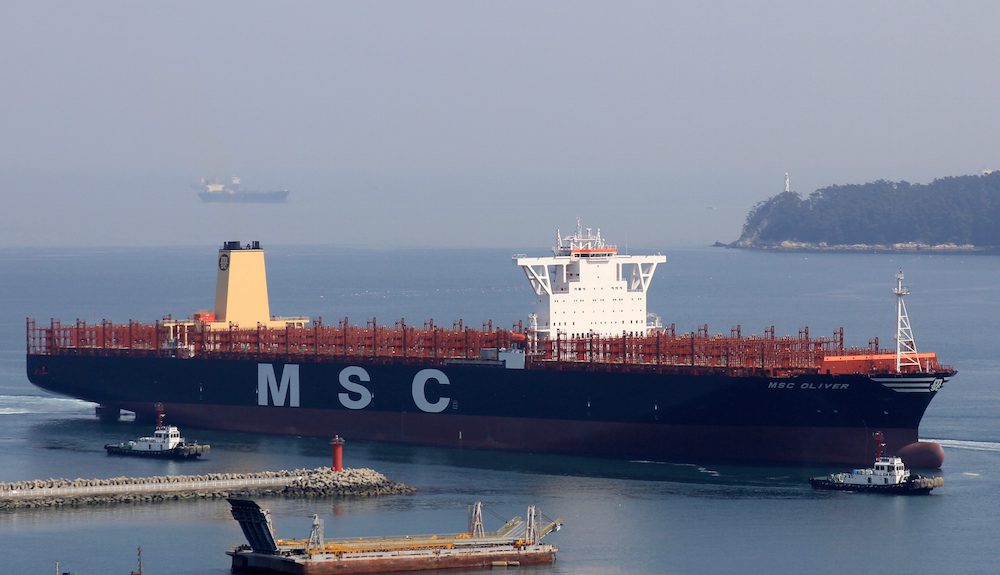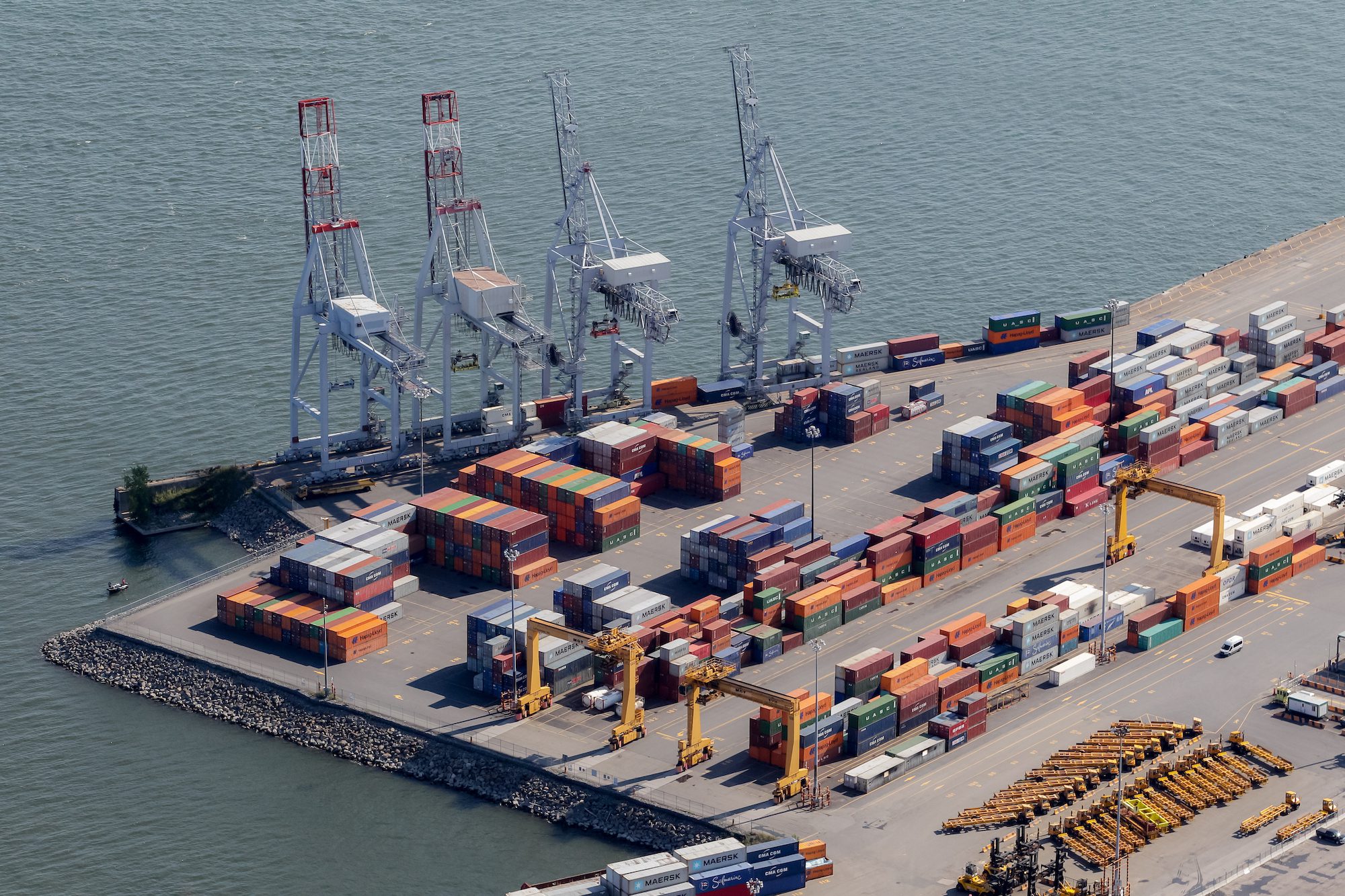The 199,224 teu capacity MSC Oliver in Okpo, Korea before its delivery in March 2015.
By Mike Wackett
(The Loadstar) – The seemingly never-ending quest by ocean carriers to operate bigger ships was a significant spur for orders for 60 18,000-22,000 teu behemoths in 2015, according to Alphaliner.
Carriers were apparently undeterred by weakening market conditions last year and continued their big-ship strategies – ultra-large container vessels (ULCVs) representing 24% of the total cellular orderbook.
The analyst warned that the “ongoing race” between carriers within the four east-west vessel-sharing alliances to have the lowest unit costs, by reason of the highest nominal capacity, would add to further overcapacity pressures, due to the high number of ULCVs to be delivered in the coming years.
Indeed, there are already signs that carriers have too many ULCVs – which, notwithstanding the recent trial on the transpacific tradelane by the 17,859 teu CMA CGM Benjamin Franklin, are generally restricted in their deployment to the Asia-Europe routes.
In order to obtain the holy grail of lowest unit cost, equating to the cheapest rate offers in the market, carriers must achieve high load factors, thus exerting further downward pressure on freight rates as the call goes out to sales teams: “Fill the ship at all costs.”
One carrier told The Loadstar recently that to efficiently service the trade it ideally needed a combination of different-sized ships going between Asia and North Europe, rather than a one-shoe-fits-all ULCV fleet.
Moreover, notes Alphaliner , there were 52 units of 10,000-13,300 teu ordered last year, albeit that these ships could be deployed on services going via the enlarged Panama Canal after it opens.
Meanwhile, according to Alphaliner’s latest data, the world’s cellular containership fleet had by the end of 2015 reached a total slot capacity of 19.94m teu, representing an 8.5% growth over the previous year.
A record 214 new containerships entered the market last year, adding 1.72m teu to the fleet. However, according to data from shipbroker Braemar ACM, there were just 93 vessels, or 213,000 teu demolished last year, as scrapping prices declined as a result of the global steel glut.
The consequence of reduced scrapping for the container shipping industry – as well as other shipping sectors (excluding tankers buoyed by oil storage charters) – is that charter rates have begun the year under severe pressure again.
And in the absence of demand, for many owners and operators there appears no option but to lay-up their own or long-term-chartered ships, continuing the trend of 2015 which saw the idle containership fleet swell five-fold to 1.36m teu – 6.8% of the global fleet.
Alphaliner does not see ‘early light at the end of the tunnel’ for the container liner industry, and notes that in February’s post-Chinese New Year holiday period there are several blanked sailings planned, which it said would lead to several large ships being idled.
“A significant reduction of the idle fleet is thus not expected until April,” it said.
The Loadstar is fast becoming known at the highest levels of logistics and supply chain management as one of the best sources of influential analysis and commentary.
Check them out at TheLoadstar.co.uk, or find them on Facebook and Twitter.

 Join The Club
Join The Club











